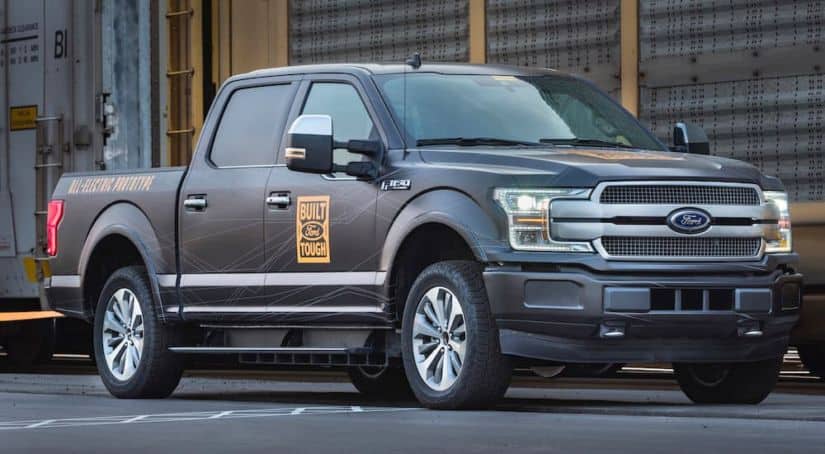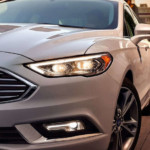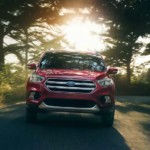When it comes to those current auto news headlines related to concepts, releases, and reveals, the most impactful of 2019 seem to key in on either sustainability or autonomy. And while advances in autonomy seem to be inching along (pending improved consumer interest), few consumers wouldn’t be interested in the offering of more sustainable powertrain options.
That said, there is an understandable sense of hesitation felt from the subset of consumers who prioritize both performance and utility in their car-buying decisions. To date, we’ve seen few proofs of concept, outside of the concept stage – especially in the truck segment. And without a production-ready look at the truck of the future, there’s been little progress made in terms of reassuring the target demographic. That is, of course, until recently.
As 2019 comes to a close, it’s been just over a year since Rivan gave us a sneak peek of their R1T project. It’s been just under six months since Ford gave us our first formal looks at their EV prototype of the F-150. And it’s been just under a month since Elon Musk and the rest of the Teslarati unveiled their long-romanticized Cybertruck and opened the flood-gates for pre-orders. So, with all that in mind, how would each of these uniquely compelling (and vastly different) options actually measure up against one another? Let’s take a look and find out. But first, some introductions:
Rivian R1T
Over the last ten years, Rivian has several redirections in terms of its focus. First, the startup set out to build an electrified sports coupe. Then, their interest seemed circled around the dual-focus of electrification and autonomy. Then (presumably seeing the writing on the wall), they chose to de-emphasize the push for autonomy, and refocus on EV. But these shifts have done little to slow progress or interest in the privately-held company, which boasts well over 1,000 employees in the United States and the United Kingdom, as well as investment interests held by recognizable names such as Amazon, and Ford among others.
Here’s a look behind the scenes:
Ford EV F-150
Ford all-but rules the roost when it comes to the global truck market. While GM and FCA duke it out for the #2 spot, Ford reigns supreme, seemingly untouchable thanks to their celebrated F-Series lineup. Representing not only the best-selling lineup of trucks but the best-selling vehicles of all-time, the F-Series is the gold standard by which most every truck is measured – and the F-150 pairs accessibility with the capability to earn its spot as the crown jewel. But in the summer of 2019, Ford aimed to convert the EV naysayers with this video, showcasing the possibilities of an EV F-150.
Instantly, the league of engineers and mathematicians rushed to the scene (much to the dismay of marketers everywhere), criticizing Ford for an on-camera misrepresentation of capabilities. But, accurate it not, it makes for a powerful gauntlet to be thrown down when an industry leader steps up to the plate, even if it’s another automaker who might deserve credit for the push for an affordable EV pickup.
Tesla Cybertruck
It was 2012 when Elon Musk first revealed his desire to challenge Ford with a new breed of consumer-centered EV truck and, after five years of discussion and development, a formal plan to deliver on that desire would be revealed. In mid-November, the Cybertruck reveal all but stole the attention of every automotive publication, claiming every headline for itself (for better or worse).
Here’s the reveal, as presented by Elon Musk himself:
By the close of the first weekend, it was revealed that over 200,000 pre-order deposits had been placed for the Cybertruck. And while the historical precedent of refunds on the Model 3 tells us actual sales might come in lower, those pre-orders remain a valuable metric. If nothing else, they give us a better idea of what Tesla is doing right and where their strategy may be lacking.
For example, 41% of interested buyers favor the high-end package of the tri-motor variant. 42% have set their sights on the middle-of-the-road dual-motor version, and only 17% have thrown down a deposit on the entry-level single-motor Cybertruck. In other words, the breakdown of reservations certainly speaks to the aspirational nature of the model. To deliver something so high-concept on the promise of an accessible price point helps to show why Tesla has been successful at carving out their own market share. But how does the Cybertruck measure up against the EV F-150, and how do both measure up against the R1T?
Remembering that none of these trucks are currently in production – and details might differ when/if they’re released, let’s take a look based on some speculative numbers.
EV Pickup Showdown
One of the most interesting elements of this particular comparison comes as a result of each automaker’s respective goal. Rivian wanted to create their version of the best possible truck. It could be argued that Ford believes themselves to have done this already, and has simply set out to create an EV version of it. Tesla wanted to make history by creating the future. Each philosophy can be seen clearly in each respective result, but that’s what makes it so much more interesting than the age-old Ford vs GM vs RAM debate. Not that we’re debating here – just comparing.
First things first, let’s just recognize that design is subjective. Those who prefer a traditional truck design are more likely to opt for the approach of Rivian and Ford, and that’s fine. The segmented body armor design of the Cybertruck won’t be for everyone, but we won’t waste our time trying to debate the merits of either three designs. You’ll like what you like, and no-one (including us) should have a damn thing to say about that.
In terms of seating, both the Rivian and Ford models are expected to offer to seat up to five, while Tesla serves up seating for six. Of course, that luxury is afforded by the cavernous cabin experience created by Tesla’s minimalist approach. Gone are the consoles, instrument clusters, and unused surfaces, and that streamlined design pays off in terms of passenger comfort. Of course, there is a downside since many traditionalists consider the Cybertruck’s simplicity to be off-putting, even referring to it as an ‘anxiety trigger.’
When it comes to EV design and capability, each automaker has chosen to go down different paths.
- Rivian has served up three options in terms of the size of its lithium-ion battery pack, each with its own numbers. The 105 kWh battery offers an all-electric range of 230 miles and sprints to 60mph in 4.9 seconds. The 135 kWh option adjusts those numbers to 300 miles and 3.0 seconds, respectively, while the 180 kWh batter serves up a 400-mile range and a 3.2 second time. And with engines mounted on each wheel (rather than each axle), the R1T offers torque vectoring performance, which would provide an interesting off-roading experience.
- Tesla also has three battery options, but the capacity for each has yet to be confirmed. What we do know is that the entry-level option serves up a 250-mile range and a 6.5-second sprint to 60 mph, with a single electric motor on the rear axle. The mid-range option gives you 300 miles and a 4.5-second run, along with dual-motor all-wheel drive. And the line-topping flagship models offer 500 miles in EV range and gets to 60 mph in 2.9 seconds thanks to a yet-undisclosed triple-motor powertrain.
- Ford’s powertrain specs are, as of yet, unconfirmed.
And what about utility numbers?
- Rivian R1T (Payload) 1,764 LBS (Towing) 11,000 LBS
- Ford EV F-150 (Payload) Unconfirmed (Towing) Unconfirmed
- Tesla Cybertruck (Payload) 3,500 LBS (Towing) 14,000 LBS
Of course, both Rivian and Tesla have built their offerings with some expectations of autonomous capability. Granted, we’re probably talking about the option of Level 3 autonomous updates being introduced somewhere down the line, but it does represent a forward-thinking approach contingent upon safety assessments and government approvals. We don’t expect Ford to attempt anything in this regard.
So what do you think? Which EV truck do you think is going to make the most impact upon its release? Which ones are you most (and least) excited about? We want to know your opinions, so be sure to comment below.



